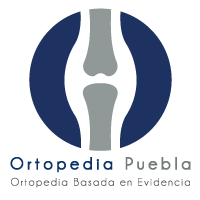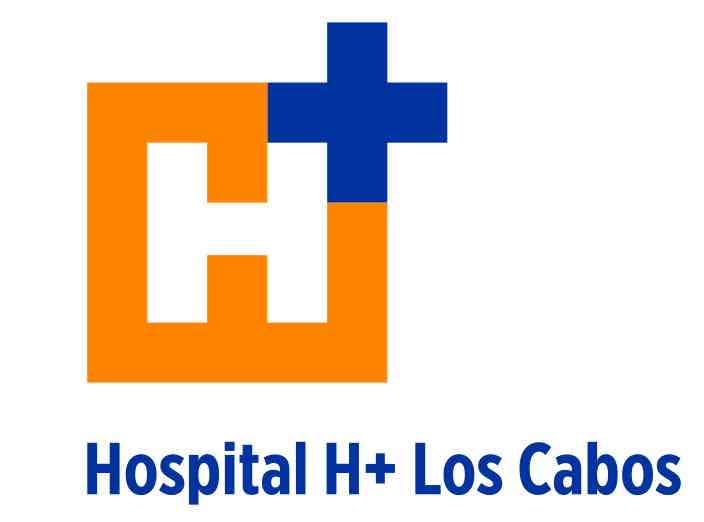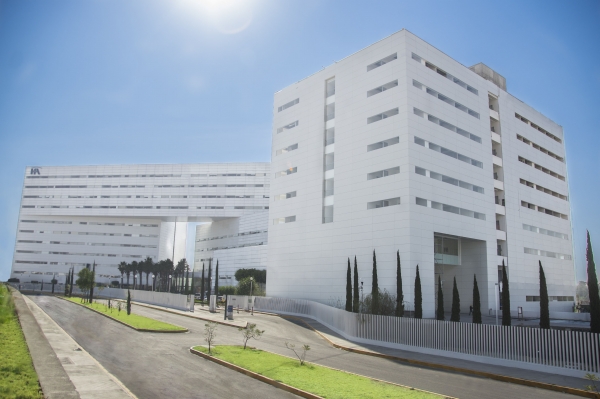
Medical Tourism
Cost is 40-70% Less Expensive
than North American prices
High-quality implants
Same as those used in top-notch American hospitals
Your health and safety are our top priorities
Meet Dr. David Cantu-Morales
Dr. Cantu is a Fellowship trained Orthopaedic Surgeon in Canada, at McMaster University.
After getting his MD from Universidad Popular Autónoma del Estado de Puebla, he did his orthopedic surgery residency at the National Institute of Rehabilitation sponsored by Universidad Nacional Autónoma de México (UNAM)
In 2015 he went to Canada for a fellowship in total hip and knee Arthroplasty at Juravinski Hospital/McMaster University in Hamilton, ON, working together with Dr. Justin De Beer and Dale Williams.
He currently lives and has his private practice in Puebla at Hospital Ángeles Puebla.
Orthopaedic Travel Organization
- From pickup & dropoff at the airport in México
- Transportation from hotel to hospital (if required)
- Safe and reliable outcomes
- Affordable prices
- Qualified medical staff
- Bilingual staff
- Modern equipment and procedures
- Minimal recovery time
- Hospital cost
- Implant cost
- Surgical team fees
- Medication during hospital
- Hotel accomodation
- Physiotherapy
*Prices may vary depending on implant needed
EXCLUSIONS
- Visa expenses
- Pre-operative tests
- Diagnostic evaluation
- Other hotel accomodations
Los Cabos
Puebla
FAQs
Hip joint replacement

A hip replacement is surgery in which the joint surfaces of the hip are removed to be replaced by artificial parts. The goal of this surgery is to improve mobility, reduce pain, as well as improve hip function.
Anyone who has a hip problem that limits their function or activities of daily living. These people commonly suffer from osteoarthrosis (joint degeneration).
Most people who undergo this surgery are over 60 years old. However, there are conditions in which it can be performed before this age: rheumatoid arthritis, hip fractures, and tumors, among others. But most of the time they are of a degenerative type.
Actually, this topic has been a source of controversy. Both types of fixations are very good. It is not that all patients are fitted with a cemented or uncemented prosthesis. Rather, it is a matter of choosing the disease and the right patient for each type of prosthesis. Each type of prosthesis has advantages and disadvantages.
No, it all depends on the patient’s condition. In addition, a thorough evaluation will always be important to determine the ideal treatment. Having a disease and symptoms similar to other patients does not make you a candidate for the same type of treatment.
Like any surgery, all over the world there is a percentage of complications. However, in this type of surgery the percentage of complications goes from 2 to 5%. Among these are included:
– Blood clots in your lower extremities (deep vein thrombosis) that can travel to your lungs (pulmonary embolism)
– Bleeding
– Nerve Injuries
– Peri-implant fractures
– Instability of the prosthesis or dislocation (the prosthesis moves out of place)
– Post-Surgery Limping
– Longer or shortened leg
– Infections
– Blood clots
– Adverse reaction to medication or anesthesia, chronic residual pain
In the first place, smoking, or having uncontrolled diabetes, are some of the most common causes of bad results with this surgery. That’s why your doctor will decide what type of implant to place once the health conditions are optimal for the surgery. Finally, rehabilitation is important to improve muscle strength and allow the proper functioning of the prosthesis.
- Travel from and to airport
- 2-3 days Hospitalization
- 3 Days- Maximum of Hotel accomodation, if required
- Implant cost
- Surgical team fees
- Medication during hospital
- Physiotherapy sessions while hospitalized and 3 days after being discharge
- Pre-operative tests
- Post-operative prescription drugs
- Meals
- Extra-hospital expenses, if required (ICU, blood transfusion, etc)
- Flight tickets
- Extra-charges at hotel (international phone calls, room service, extra-room, etc)
Knee replacement

Knee prosthesis surgery or joint replacement (knee arthroplasty) has a 90% success rate, removing pain and allowing a better quality of life by being able to perform functional activities. It is important to have realistic expectations, since this type of surgery will not allow you to perform activities that you never did before your condition. The ability to exercise will be noticeable, however, it is recommended to only do low-impact sports activities such as cycling, walking, golf, swimming and dancing.
This surgery will allow you to drive without pain, walk, go up and down stairs without pain, and correct the deformity in the leg that was presented as a result of joint degeneration. However, it is not recommended to perform high-impact exercises such as jumping, jogging, running, among others, because although the surgery will remove the pain, this type of activity will not cause pain at first, but it will put the duration of your prosthesis at risk, since the wear and tear on the joints will be greater. A prosthesis with normal life expectancy is estimated to last from 25 to 35 years, although there are some exceptions where this duration can be reduced, and there are several factors that would cause this decrease in duration.
An optimal state of health is important at the time of the surgery, this means that in case you suffer from any chronic disease (diabetes, hypertension, cardiac arrhythmia, venous or arterial insufficiency, etc.) you will need to be controlled in order to carry out this surgical procedure, since it is considered an elective surgery, and it does not represent any urgency. For this reason, an evaluation is requested by an internist or cardiologist who gives the go-ahead for surgery. There are cases in which the patient’s health is not in optimal condition, and performing the surgical procedure would put the patient’s health at greater risk than living with the pain.
It is very important to have no history of having received a steroid injection in the knee at least three months before the surgery.
An evaluation by a dental doctor is necessary, since suffering from an untreated oral infection increases the risk of infection during surgery.
Social planning must also be done, as well as at home, since during the first weeks after surgery, you may require help from someone to do your shopping, cooking, bathing and laundry. At home, it is recommended that you remove all possible obstacles that could cause you to trip or interrupt your walk, such as wires, carpets, etc
The anesthesiologist who will be present during your surgery will determine which anesthetic procedure is best for you, since the type of anesthesia may be general (you are completely asleep during the surgery), spinal, epidural, regional, or some combination of these.
The surgical procedure lasts approximately 1 to 2 hours. A cut is made in the skin and then one to enter the joint. The damaged joint surfaces are replaced with components of titanium, chrome-cobalt molybdenum, and polyethylene.
At the end of the surgery the legs will be numb and unable to move, that is because of the anesthetic effect.
After leaving the operating room, you will be taken to a recovery area where your vital signs will be monitored, and finally you will be taken to your hospital room, where you usually stay one or two nights on average.
Once you are in your room, your vital signs will be monitored, as well as giving you pain medication, prophylactic antibiotic, anticoagulant and gastric mucosa protector.
The neurovascular status of your leg will be assessed, as well as your ability to begin moving your leg, which will determine that the anesthetic process is taking effect.
Bleeding data will be monitored. Usually the wound will not be discovered until 10 to 14 days after surgery (at the doctor’s office) where the wound will be checked and it will be decided whether the stitches or staples will be removed that same day.
The following day of the surgery, the rehabilitation protocol will begin with physical therapy, which will consist of initiating knee flexion and beginning ambulation (walking), assisted at first by a walker. This is an important stage of your surgery since you will need to complete the deambulation as well as a certain range of motion in your knee in order to determine that you are in optimal conditions to be discharged from the hospital. Breathing exercises will also be started.
It is important not to uncover the wound or apply any cream, ointment or lotion to the wound. The patch that is placed should not be removed until the doctor’s reassessment. The wound should not get wet.
Good eating habits, especially high-fiber foods, are important for proper wound healing and glucose control.
Usually a person returns to their normal life routine within 1 month after surgery, however this time depends a lot on your discipline with the rehabilitation program. Rehabilitation is not just lifting the leg and bending, but requires supervision by a specialist in this area.
Yes, the presence of fever, disproportionate increase in the volume of the knee (a slight increase in volume is to be expected after surgery), difficulty in breathing, pain in the calf as well as the impossibility of standing with the assistance of a walker, are data with which you do not have to wait long to see how they evolve, it is worthwhile contacting your doctor.
It is estimated that you will be able to drive again in 4 to 6 weeks, because during these weeks it is expected that you will be able to have a complete range of motion in your knee, which will make it easier to get in and out of the car, brake, accelerate or step on the clutch.
The percentage of complications is low, occurring in about 2- 5% of the cases. Although they are rare, these complications can jeopardize health and prolong recovery time as well as the function of the prosthesis.
Complications associated with this procedure include thromboembolism (blood clot formation), infection, chronic pain, fractures associated with surgery, heart attack, adverse reaction to anesthesia as well as medications, implant instability and dislocation, postoperative rigidity, neurovascular injury, fat embolism, excessive bleeding, implant failure. Although there are many complications that can occur from this surgery, they represent 5% and will always be associated with different factors
The benefits of this surgery far outweigh the complications, not for nothing has it been considered the most successful surgery, along with the hip.
- Travel from and to airport
- 2-3 days Hospitalization
- 3 Days- Maximum of Hotel accomodation, if required
- Implant cost
- Surgical team fees
- Medication during hospital
- Physiotherapy sessions while hospitalized and 3 days after being discharge
- Pre-operative tests
- Post-operative prescription drugs
- Meals
- Extra-hospital expenses, if required (ICU, blood transfusion, etc)
- Flight tickets
- Extra-charges at hotel (international phone calls, room service, extra-room, etc)
What are the next steps?
- Complete your medical history form and the most recent image of your hip or knee x-ray, as this will be needed to schedule your virtual conference with your doctor
- Plan your date of surgery and the place where you would want it. Discuss with our team the best date that suits you
- Get your fligt tickets and let us know about these so we can arrange everything else
- Pay the 50% in advance
- The day before surgery - Consultation to be cleared off by internal medicine
- Surgery day - Final payment
- 2 nights at hospital - Physiotherapy included
- 2 days at hotel - Physiotherapy included
- Flight back
Please complete our medical history survey




